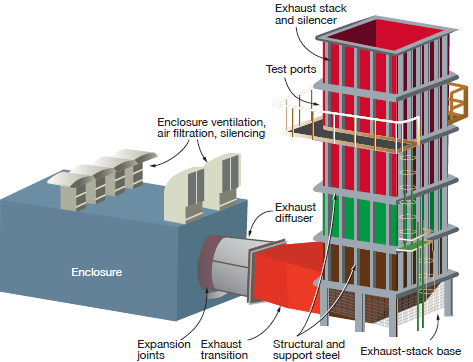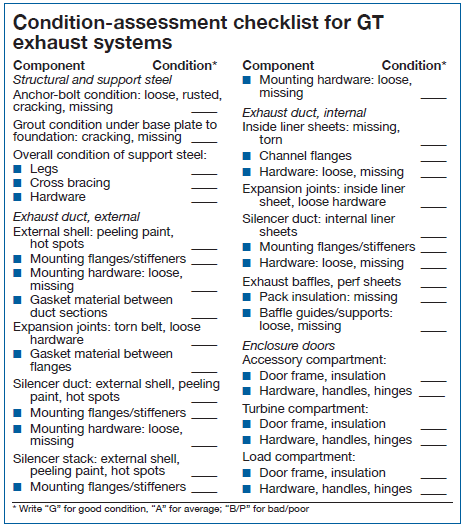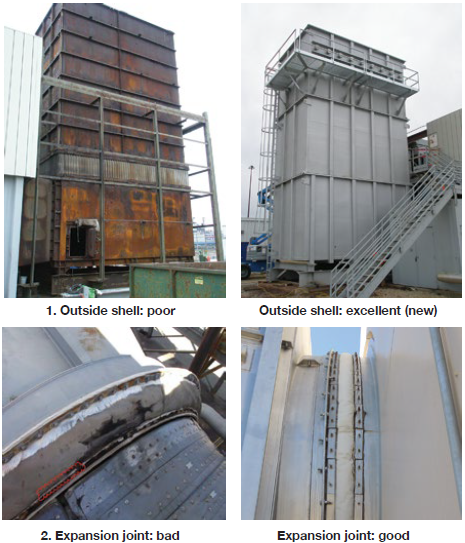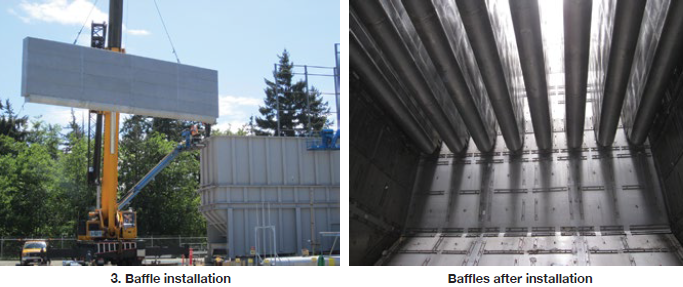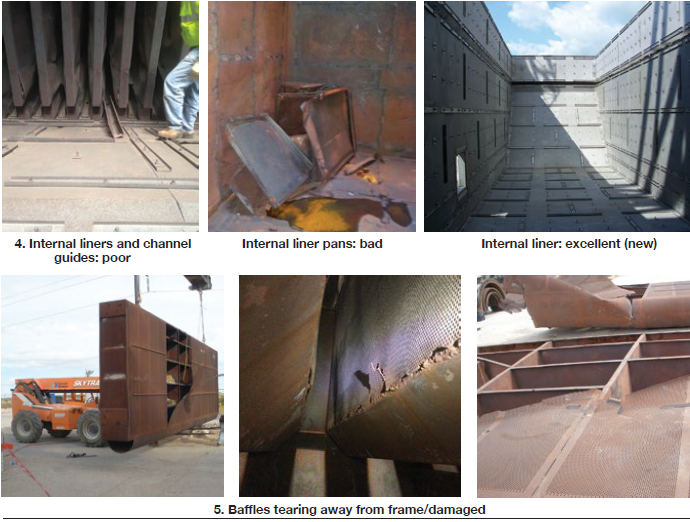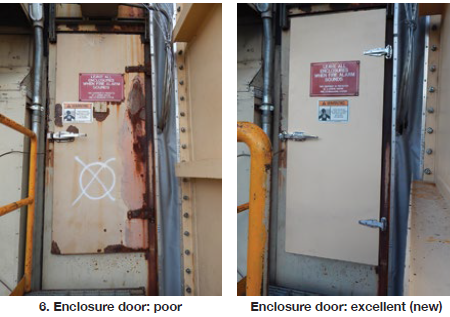By Bill Grace, Universal AET™
When it comes to exhaust systems for gas turbines (GTs), it seems hardly a day goes by that we aren’t asked to answer one of the following questions:
- When will our exhaust duct and/or exhaust baffles fail?
- When will our expansion joint blow out, expel GT exhaust, and create a dangerous situation?
- Will my exhaust baffles collapse, cave in, and create a potentially catastrophic failure?
Since there is no sure way to predict the exact time of equipment failure, conducting regular and rigorous equipment inspections is the best form of insurance against unexpected downtime or a catastrophic event. A well-conducted and thorough inspection can identify both immediate areas of concern and longer-term issues requiring ongoing attention.
When it comes to GT exhaust systems, the checklist provided in the sidebar identifies what your inspection team should look for. Access an 8½ × 11 in. version of the checklist, designed for convenient use in the field.
However, before beginning the physical inspection, it’s important to pull together an equipment history. The solutions provider you select for repairs and upgrades will want to know unit age and its commissioning date. Also, what has been repaired/replaced over the years. The typical mode of operation—baseload, daily cycling, or standby power—is required as well; plus, the expected operating regime going forward.
Once this information is compiled, the inspection is conducted to determine exhaust-system condition. These results, combined with the data from intended use, age, replacement components, etc, comprise the final report.
Here’s what to focus on when inspecting your equipment:
Support steel. Starting with the foundation and support steel, evaluate the anchor bolts, grout, and steel members: Are they rusted or cracked? Are any pieces missing? How does the cross-bracing look? These are the critical components in that they support and provide a solid footing for the engine exhaust system (Fig 1).
External exhaust-duct casing. A comprehensive visual inspection can provide an indication of good or bad duct—or even something in between. Visual inspection is influenced by the type of siding—appearance or acoustical. If the internal insulation is missing and hot exhaust gases expose the external shell to temperatures in excess of 750F, then the material will crystalize and total corrosion of the carbon steel is possible.
Under these conditions, “pin-size” holes will start to form and turn into larger holes. These typically result in the site performing some temporary patches to “cover” the holes. Patches are only a short-term solution—additional deterioration will occur. The rate of deterioration depends on the amount of cycling need to meet load demands.
Expansion joints. Even if properly sized for the movements of the duct from one piece to another, and installed properly, expansion joints will fail over time; they are “wear and tear” items. From the outside, it’s fairly easy to determine the condition of the fabric belt and whether it’s good or torn—you’ll notice the “bad” in Fig 2 is leaking exhaust gas. Excessive growth aside, only an internal inspection can address most of the reasons contributing to these failures.
Silencer duct. Moving to the external shell of the silencer duct, what applied to the exhaust duct also applies here. Look for peeling paint and hot spots, and at the condition of stiffeners. The exhaust stack has the same inspection criteria.
Once the outside shell of the duct, silencer section, and stack have been inspected, going inside the exhaust duct will give an indication of what is happening with the inside liner and insulation pack on the side walls, plus the exhaust baffles used for sound attenuation (Fig 3).
Inside liner sheets. Some things to look for here include the following:
- Is the internal hardware in place and solid, with the weld holding up?
- Has any of the hardware been “sheared off” because of excessive growth of the liner sheets?
Keep in mind that as the mounting hardware loosens and is sheared from the bolt/stud, the sheets have a tendency to become loose/rip, etc (Fig 4). When this happens, the inside insulation pack material may disengage from the area that protects the inside casing material; hot spots and peeling paint can occur if the condition is ignored.
Exhaust-silencer baffles are among the components that take the most abuse from exhaust flow. Depending on operating conditions (baseload or cycling) and baffle design, the perforated sheets can suffer fatigue and become loose or even separate from the baffle frame that holds in the insulation pack for sound attenuation (Fig 5).
Once the perforated sheets begin to tear or crack, there’s a greater chance of the insulation pack migrating downstream. If that happens, turbine noise will increase. Maintaining baffles in good condition is critical to long-term reliability and to keeping your neighbors and employees safe and comfortable.
Enclosure doors, including turbine- and load-compartment doors, have a tendency to get extremely hot during GT operation (Fig 6). Some of the specific areas to inspect include these:
- Exterior door frame, because of its exposure to the elements.
- Door exposure to high internal temperatures—because of leaking flex seals, for example—can cause thermal corrosion of the paint and steel substrate. Be sure to check the condition of the door’s insulation pack and hardware (hinges and latches).
- Check seal/gasket material for corrosion caused by back splashing and water entrapment.
- Look for panel distortion from rough use; this can cause loss of sealing and increased thermal cycling.
- Check for corrosion from scratches, gouges, and other defects introduced into the paint.
The bottom line: Keeping your system in pristine condition can be a challenge, but maintaining it can avoid unexpected outages, downtime, or a serious failure. If you don’t have resources ready to do the necessary maintenance or inspection, there are field-service professionals who can help you establish and maintain an inspection schedule and procedure that works for your plant. CCJ



